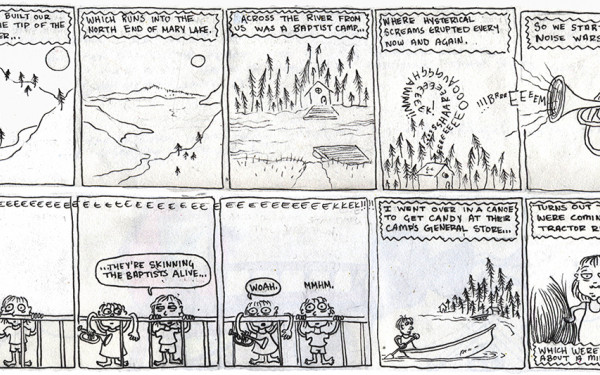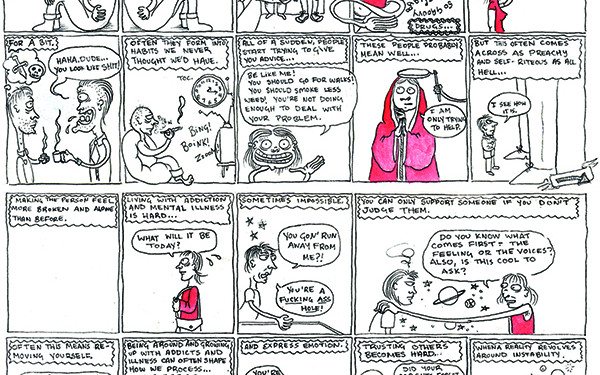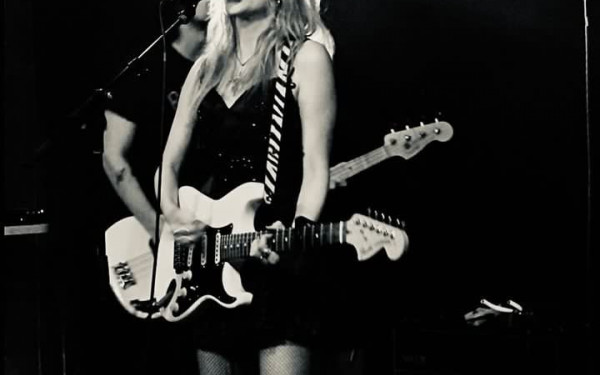Emo Night MTL: A Testimony
How a Non-Former Emo Had a Great Time at an Emo Event
The first thing that struck me when my friend and I arrived at TRH-Bar for the first edition of Emo Night Mtl on Friday was the giant line of people waiting to get inside.
Decked out in heaps of eyeliner, striped sleeves and swooshing side-bangs, it seemed we were in the right place.
I’ll be honest. When I first agreed to attend this event on Facebook, I didn’t think I would actually go—I didn’t think anyone would, really. But there they were, loads of former or current emo kids waiting in line to re-live the early 2000’s glory days.
The definition of emo culture is vague. Some view it as a combination of punk and hardcore, but with melodic and emotional aspects. It’s both a music genre and a subculture, and is generally associated with celebrating and accepting sadness. As one former emo kid told me at TRH bar, “It was a lifestyle.”
Dashboard Confessional’s “Hands Down” was playing almost too loudly for me to hear our conversation when I approached Tamara Montenegro, a self-professed former emo-kid. She yelled in my ear that she came to Emo Night to remember all the good times she used to have back in the day, adding that she became friends with the person next to her through their shared interest in emo culture.
“I still listen to most of that music anyways,” Montenegro said. “I guess we all grew up, but deep down we still all look back to those days.”
Many of the attendees still listen to bands like Taking Back Sunday, Fall Out Boy, My Chemical Romance and Brand New. The crowd screamed along to the bittersweet lyrics and moshed around to heavier songs.
So why don’t we see emo culture in our daily lives anymore? Is it because we grew up, or are there young emos still looking for emotional fulfillment through angsty, melodic and impassioned music?
3web_900_657_90.jpg)
And why was everyone at the event closer to 30 than 15?
“I think things change,” Montenegro said.
Ten years ago, emo vibes were everywhere. The turn of the millennium ushered in a new kind of angst, one where you didn’t need to hide your feelings to be part of a scene—being emotional and wearing your heart on your sleeve, literally, was celebrated.
Where grunge provided a sarcastic, apathetic approach to teen angst, emo took things to a new level. The early-to-mid 2000s provided a perfect breeding ground for music and a new culture that would eventually make the outsider a part of the mainstream.
Maybe that’s what happened to emo culture: as soon as it became popular, it no longer held the same importance and sanctity in people’s hearts, and so it slipped through the cracks. The 2010s came with a slew of new counter-cultures that took the reins away from emo culture.
This isn’t the first time we’ve seen this phenomenon—some argue that The Clash stopped being punk the moment they signed to a major record label. For many counter-cultures, mainstream means death, or at least comatose, for most of its supporters.
Even if they grew out of it, former emos are nostalgic about the time when they were fully immersed in the lifestyle. The Facebook event for Emo Night was rife with eager calls for a second edition.
Even I, probably the furthest thing from a former emo (I wore Hollister in 2006) had the best time screaming along to the words of My Chemical Romance’s “Welcome to the Black Parade.”
The skateboarders shredding next to the Emo Night dance floor nodded their heads along to the music.
When I woke up on Saturday, my friend texted me to say she was re-learning all the old Dashboard Confessional songs she used to play on her guitar.
And I was still humming Dashboard Confessional days later.

2web_900_639_90.jpg)
2_900_675_90.jpg)

3web_600_375_90_s_c1.jpg)


